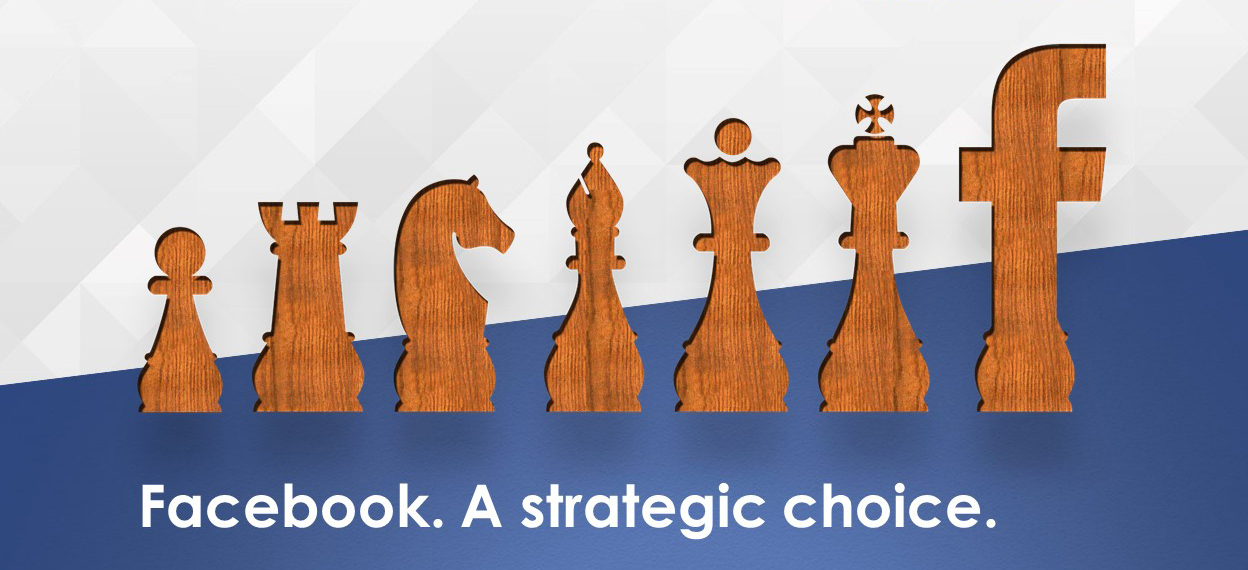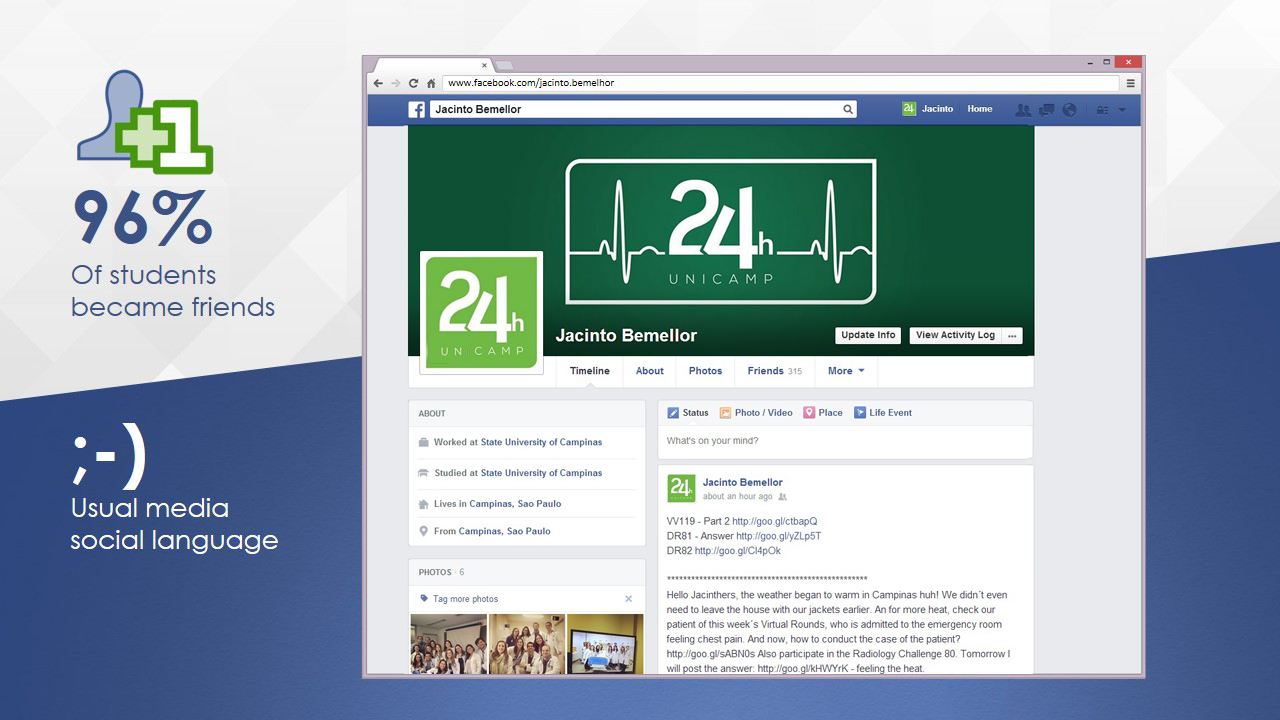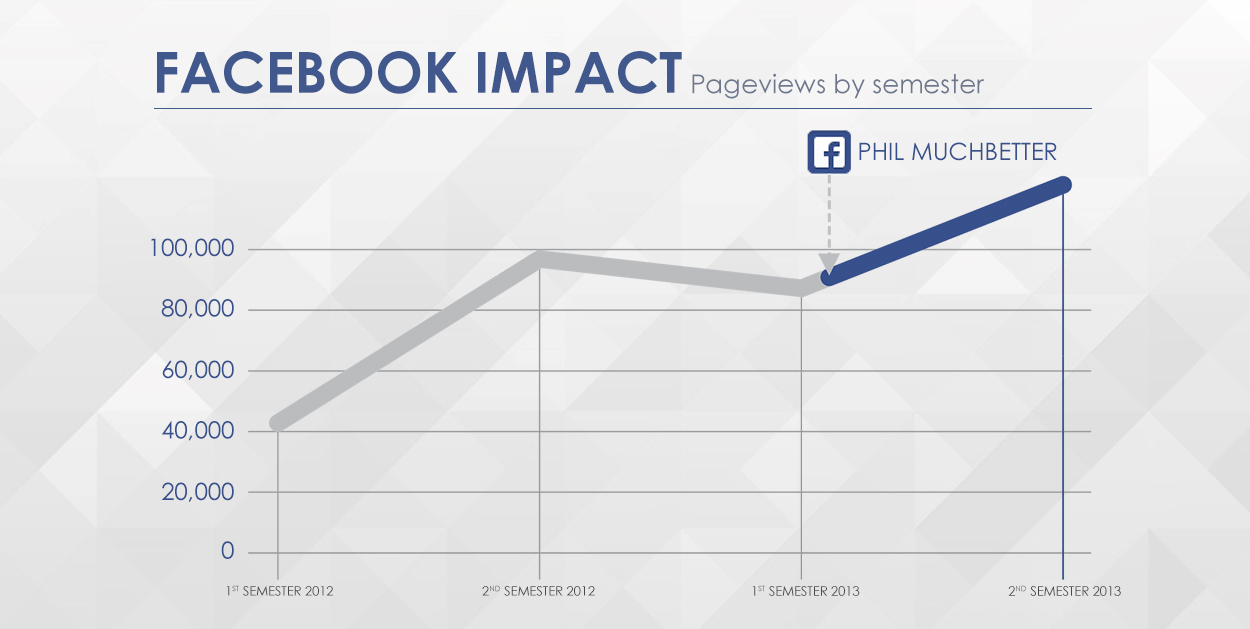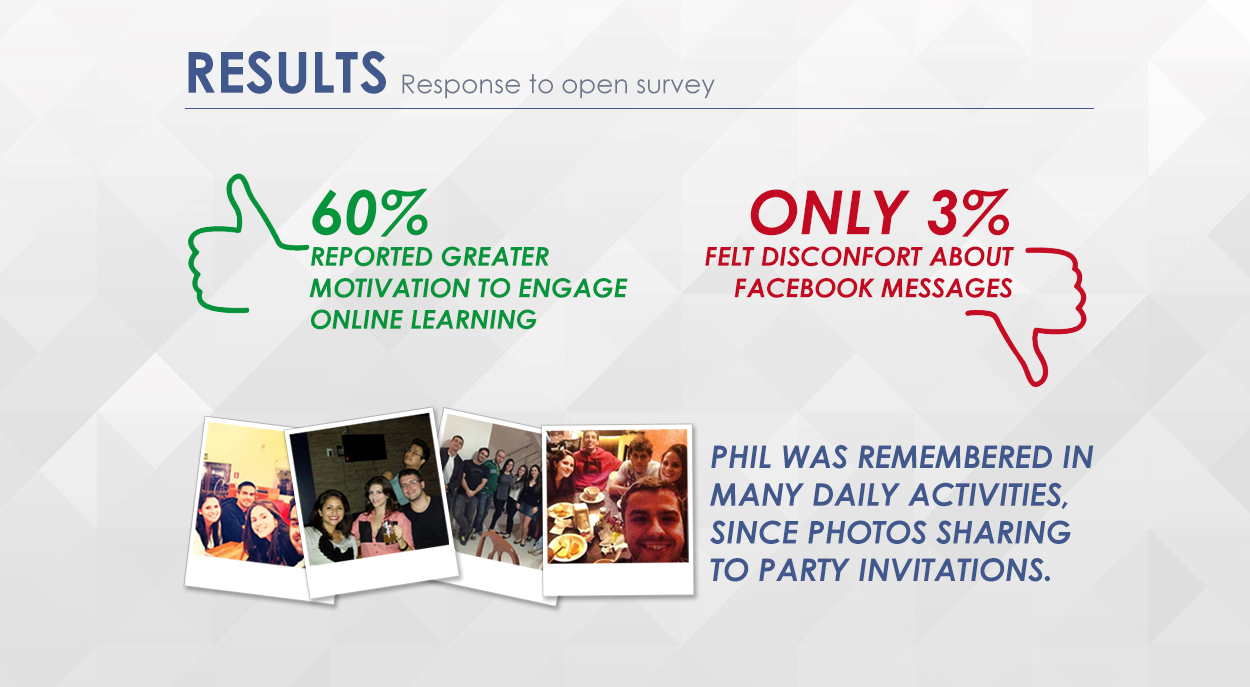
| Theme: 9II Virtual Patients/Social networking | |||
 |
||||||
| Phil Muchbetter: A Facebook character to increase medical students participation on a Moodle based e-mergency medicine course |
 |
|||||
|
||||||

If we are really interested in pursuing e-learning, then we need to consider what it is the learner actually wants and does at online world, including activities selected by students, like SM.
Social media (SM) are online environments in which content is created by users for users, which could allow knowledge to flow more effectively.
Today SM are used primarily for personal contacts, professional contacts, share informations and for updates in general, but there is evidence that Social Media can be used in Medicine, such as for health promotion, medical education and conferences.
In this context, last years we have seen a greater number of scientific studies that assess the impact of SM in Medical Education. The main focus of most articles is specially related to the anonymity of patients (and students) and the confidentiality of medical information, which can lead to problems related to professionalism. It has not been defined the best way to use SM in Medical Education.
Among all SM, Facebook is the most visited sites worldwide, with more than 1 billion daily users. Every hour, 6 million messages are sent and 3 million links are shared. In the UK, over 70% of medical students are active users, numbers that are similar in the United States and in Brazil. Facebook can be accessed at any place with Internet, including tablets and smartphones.
Therefore, it could be a useful adjuvant tool to provide relevant medical information to undergraduate students.
We used Facebook to increase participation of undergraduate students in a course of Clinical Emergencies, developed in Moodle platform.


In 2013, 110 sixth year undergraduate medical students voluntarily participated in a course of Clinical Emergencies in Moodle platform, available throughout the year for all of them.
Students were allowed to participate in several activities, as virtual rounds (clinical cases in daily discussion fóruns, Monday through Friday), quizzes and weekly challenges (radiology and electrocardiogram) that had the primary goal of develop clinical reasoning for emergency care.
In the second semester, the students received daily messages through Facebook, with links to every updated activities on our platform.
We created the character 'Jacinto Bemelhor' ('Phil Muchbetter 'em Inglês) to send the messages and interact with the students. Students were invited to became “Phil´s friends”, and those who had freely accepted were put at a group to receive the daily messages.
We tried to avoid using an excessively formal language, to match the kind of language that students use in Social Media.
No data that would allow identification of patients were available. To enter the Moodle platform, students had individual login and password.

Click “more details” to follow the link in a Facebook message.

There were 209 thousand pageviews throughout the year in the Moodle platform course.
After the introduction of Facebook messages in our course, there was a 55% increase in the total number of pageviews and a 24% increase in the daily number of students participating in the platform.
Before the Facebook messages, there were 82 thousands pageviews, and after the messages, 127 thousand pageviews.
Students could access the Moodle platform by two ways: direct access (www.ggte.unicamp.br/moodle) or by the Facebook messages. Of all, 75% of the accesses to the Moodle platform were performed directly via Facebook links.
We also found positive correlations (Spearman´s correlation coeficiente = 0,43; p<0,01) between the number of pageviews and the grades obtained by students in the discipline of Clinical Emergencies (calculated after 2 exams composed by multiple choice questions, open questions and 8 OSCE stations).
In a survey at the end of the course, 60% of students reported greater motivation to participate in the course after the introduction of Facebook messages.



Social Medias may be a fun and modern way to engage students on educational activities.
1. Cheston CC, Flickinger TE, Chisolm MS. Social Media use in medical education: a systematic review. Acad Med 2013; 88: 893-901.
2. Brunskill D. Social Media, social avatars and the psyche: is Facebook good for us? Australas Psychiatry 2013; 21(6): 526-532.
3. Ahmed OH, Sullivan SJ, Schneiders AG et al. Ethical considerations in using Facebook for Health Care Support: a case study using concussion management. PM R 2013; 5: 328-334.
4. Bahner DP, Adkins E, Patel N et al. How we use social media to supplement a novel curriculum in medical education. Med Teach 2012; 34: 439-444.

 Send Email
Send Email